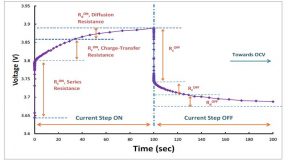 Igor Bimbaud, Director, New Energies
Igor Bimbaud, Director, New Energies
STMicroelectronics
With the Internet of Things predicted to reach at least 24 billion devices by 2020, one outstanding question is how to power all these devices connected to the cloud, and ultimately to us. Some of these devices will be directly connected to our homes’ electric lines, the long promoted Internet-connected refrigerator comes to mind. But many other devices will be portable or wearable and flexible, which, in addition to presenting power challenges, significantly restricts form factor and increases design limitations. This is particularly true of the new generation of wearable devices, which need to be fashionable as well as functional.

The function-ability falls into two categories: form and robustness. A smart watch, in general, needs the smallest, most efficient, and longest-lasting power source available. No one wants to strap a 9 V battery to their wrist.
Energy harvesting solutions can carve out small bits of power to realize the on-the-go connections necessary for many IoT applications from solar, temperature changes, vibration, human motion, and mechanical motion—and a few options are available now.
But all of these energy harvesting devices require power storage – a battery. Which brings us back to the form factor constraint. Enter the thin-film battery. Initially introduced to power smart-card applications, thin-film batteries with extended lifetimes have evolved as the solution for powering the myriad sensor nodes that comprise the IoT.
Some claim it is difficult to make lithium batteries thin, flexible and safe. However, thin, rechargeable, solid-state, flexible lithium batteries are already on the market and in consumer products. For instance, the paper-thinness of EnFilm advanced rechargeable batteries liberates designers from the constraints of standard battery sizes.

The EnFilm battery is completely solid, preventing leakage of any solvent or gas that might risk burning or explosion. At just 220 µm thick and measuring 25.7 mm by 25.7 mm, the EFL700A39 EnFilm solid-state lithium thin-film battery is well suited for use in ultra-low-profile devices. Surface-mount terminals allow direct attachment to the circuit board, simplifying assembly and eliminating wires and connectors. Optional tape-and-reel packaging allows high-speed automated placement. With 3.9 V nominal voltage and 0.7 mAh capacity, it can power a wide range of applications. And when energy harvesting is used, EnFilm guarantees continuous operation of the application, even when the energy harvesting is temporarily interrupted (brown-out phases).
EnFilm combines attributes of commercial batteries and super capacitors. Its flat discharge curve (shown in Figure 2), which is similar to that of a traditional battery, makes it possible to get full use out of it with a simple power management unit. On the other hand, it can be recharged in only about 30 minutes by applying a constant voltage (see Figure 2) like a super-capacitor, and it displays low capacity loss as well as long cycle life. This provides up to 10 years of use with a once per day charge.

RoHS compliant and UL certified, the EFL700A39 satisfies UN tests and criteria for battery transportation, meets IEC 62133 safety specifications, and meets the ISO7816/IEC10373 mechanical and flexibility standards for smart cards. Figure 3 shows a layered view of the EFL700A39 thin-film battery.
This battery already powers the world’s thinnest watch (1mm thick) and a powered smartcard. In a manufacturing facility in France, a network of temperature sensors (tiny silicon Thermal Electrical Generator (TEG) and the EFL700A39) has been installed that monitor the heat of the electrical power bus ways that distribute power. These sensors are powered by a thermal electrical transducer that converts the heat from the bar to electrical power.
The EnFilm is a back-up energy source that guarantees continuous operation even if the temperature is falling and the power from the thermal transducer is reduced. Enfilm can be used for home automation and security; bodywear; tracking and sensing applications, and industrial applications.










